Cheap, lightweight and easy to manipulate, burlap has become a popular way to protect transported B&B trees from the nursery to their planting site. To add justification for its use it’s also touted as biodegradable. “No need to remove it!” or “Leave it in place to protect the root ball.” and other such phrases are often tossed at the unknowing homeowner but are they laudable? Let’s investigate.
Hessian soldiers ca. American Revolutionary War – what do they have to do with burlap?

Burlap is the North American name used to refer to a fabric known as hessian in other parts of the world (except in Jamaica where it’s called crocus.) “Hessian” is attributed to the historic use of the fabric as part of the uniform of soldiers from the former Landgraviate of Hesse and its successors, including the current German state of Hesse. Soldiers from these areas were called “Hessians”. If you recall your American Revolutionary War history, the name Hessian might ring a bell.
While the word burlap might bring to mind the image of a coarse brownish material, Hessian fabric is available in different types of construction, form, size and color. Even though the two names refer to the same fabric, we’ll stick with “burlap” for our discussion.
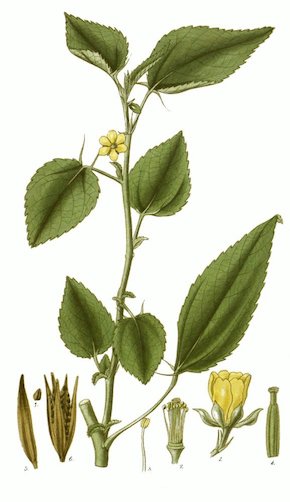
Burlap is produced from two Corchorus species in the Malvaceae family. The main fiber source is C. olitorius but the fiber from C. capsilarius is considered superior to it having a finer texture. Both plants are called jute, which also applies to the fiber.
Jute grows best in a warm, wet climate. A long monsoon season followed with consistent temperatures over 75ºF/ 25°C and relative humidity of 70%–90% are ideal. Jute requires 65″-80″/160–200 cm of rainfall yearly plus extra during the sowing period. The plants prefer river basins, alluvial or loamy soils with a pH range between 4.8 and 5.8. Periodic flooding or marshy conditions are well tolerated. ~85% of the world’s jute is grown in the Ganges Delta.
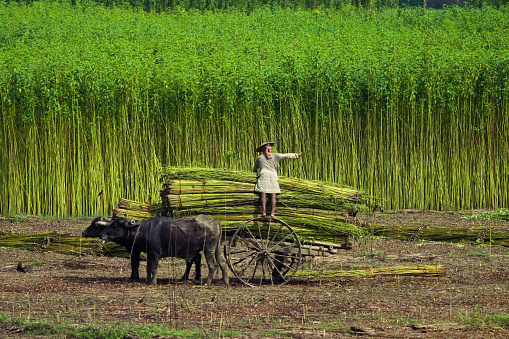
When ready to harvest, the jute is cut off at the soil surface and gathered into bundles for transport and processing. To extract the fiber, the jute bundles are retted. There are a variety of retting processes: mechanical (hammering), chemical (boiling & applying chemicals), steam/vapor/dew retting, and water or microbial retting. Water or microbial are the oldest forms and most often used.
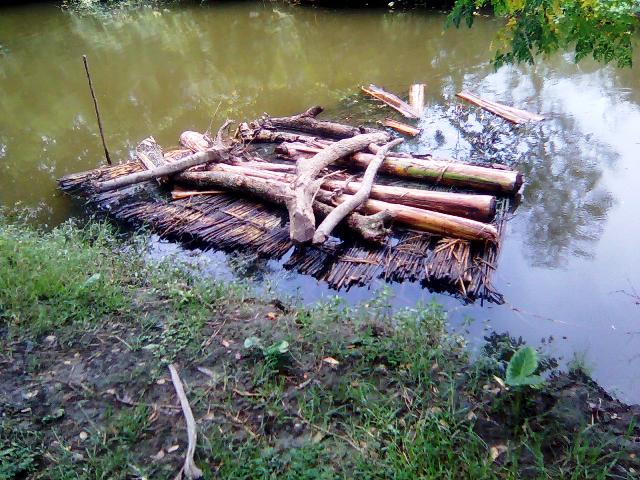
When the jute is well retted, the bundles are hit with a long wooden hammer to loosen the fibers from the core. After loosening, the fibers are washed with water and squeezed dry. The extracted fibers are further washed with water then hung up to dry. When dry they’re tied into bundles to be sold at market.


So what does all of this have to do with B&B trees?
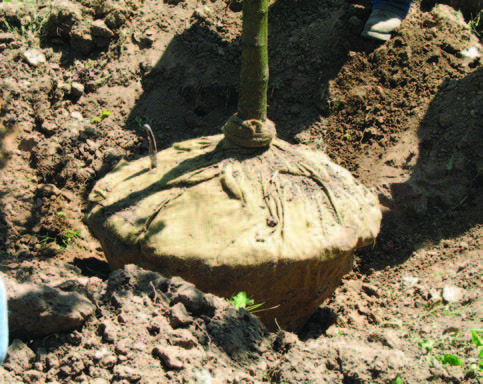
Burlap, even a tightly woven burlap, “breathes.” This gives it a strong resistance to condensation, moisture, and fungal growth. Jute is a hard fiber which makes it very durable and jute burlap is wear, tear, puncture, and stretch resistant. Breathability plus condensation, moisture, fungal growth, wear, tear, puncture and resistance to stretching are all qualities which make burlap a good choice for the transport and storage of goods and as a geotextile.
“Natural” burlap is lightly treated with an emulsion, usually a cheap plant based 3:1 water and oil mixture, as a part of the weaving process. The mixture makes the fibers easier to handle and move through the loom, and helps reduce waste. The water does most of the work; the plant-based oil just prevents the water from evaporating so quickly. Burlap made with plant-based emulsion is required for food safety, storage and transportation and aren’t as long lasting as the other type of burlap. They normally last about three years in use but can take up to a decade to decompose.
Yes, you read it correctly.
“Natural” burlap can take 10 years to fully decompose.
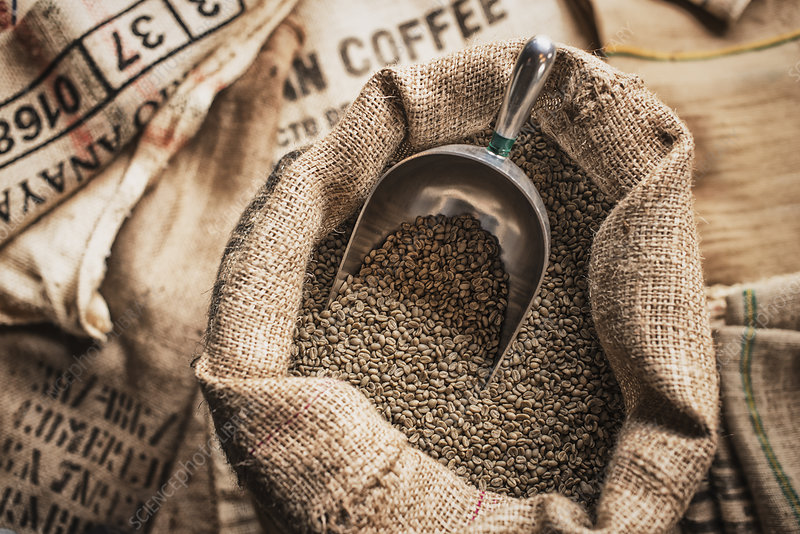
Image credit: Tim Pannell, Mint Images/Science Photo Library
The qualities that make burlap good for food stuff transport also make it useful in the construction, landscape, government/emergency services, and outdoors/sporting sectors. Fabric woven for use in these areas is treated differently; the emulsion used on it during weaving is usually petroleum based. This emulsion is designed to add more water, rot, and gnawing pest resistance to the fibers prior to weaving. It can leave the fabric feeling “sticky” or “coated” and tends to attract dust and dirt. It also has a peculiar chemical aroma to it. The finished fabric is often treated again to add even more resistance. So, the fibers are treated prior to weaving and then often again afterward. A double whammy, so to speak. “Treated” burlap is very long lasting, durable and can be stored for years in a variety of conditions without the fibers weakening. It can last for decades, above and below ground.
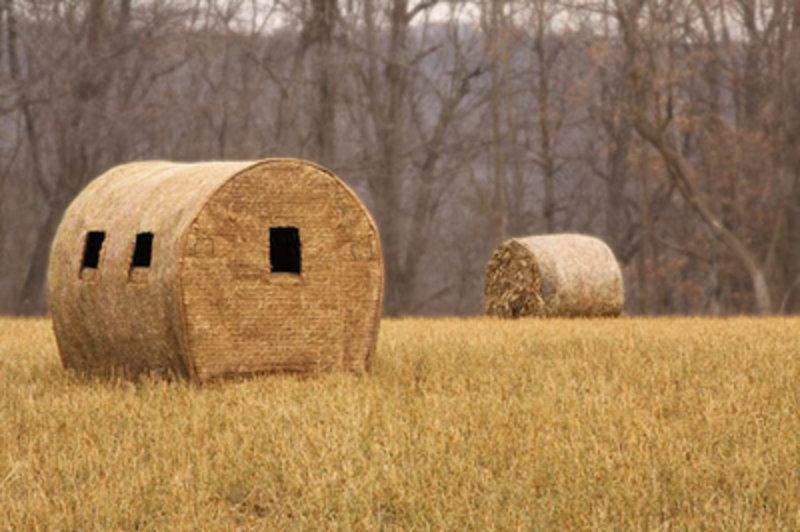
We didn’t know this was a thing.
Which brings us back around to B&B trees.
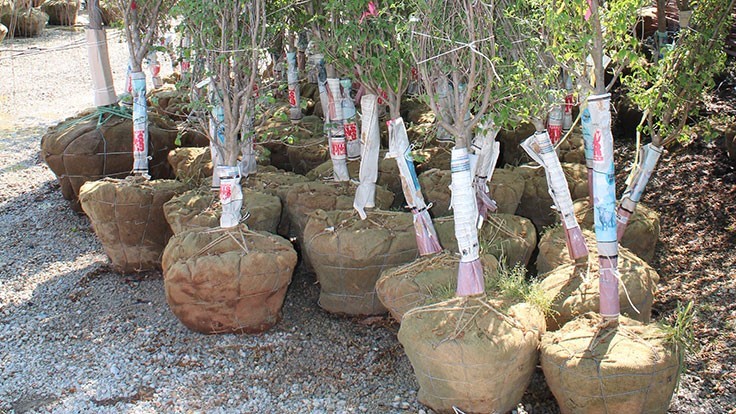
Guess which burlap is used almost exclusively in the landscape industry, the “natural” or “treated” ?
If you guessed “treated,” you’re correct! Its durability, ease of use, and excellent storage qualities makes it the #1 choice for transporting nursery trees.
Unfortunately many, if not most, plant people don’t know about different burlap types and are relying on out-dated information. (This is true in more areas than just burlap, but those are other issues.)
Try asking if the burlap on that root ball is “natural” or treated and see what their response is. Feel the fabric yourself. Does it have a tacky feel, do your fingers drag on it, does it seem to attract dirt or dust? Does it have a chemical or petroleum odor to it? These are all indicators of treated burlap. Both natural and treated burlap degrade slowly. Leaving burlap on the root ball will only encourage circling roots and probably doom the tree.
Just so we’re not being misunderstood: Wrapping the root ball with burlap for transporting purposes is all well and good.

But you have to remove it at planting!
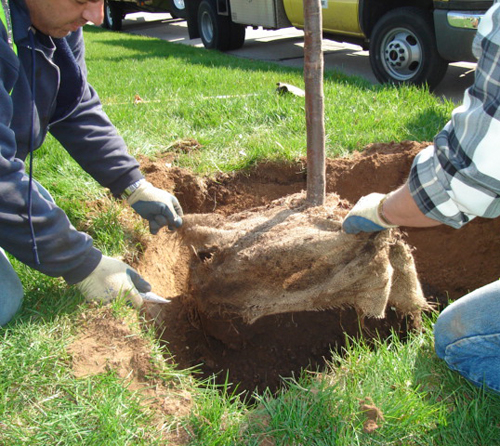
Let’s do a quick review of the qualities of burlap and how they can backfire when planting trees.
Breathability: not really a problem underground but can cause the root ball to dry out if the tree is exposed to the air for too long.
Condensation and moisture resistant: doesn’t absorb water so the fibers won’t rot.
Little to no fungal growth: isn’t consumed by fungi so fibers stay intact.
Tear and puncture resistance: roots can’t push or force their way through therefore encourages circling roots.
Doesn’t stretch: won’t expand with root growth therefore encourages circling roots. Sound familiar?
“Natural” burlap: can take up to a decade to completely decompose all the while negatively impacting root growth.
“Treated” burlap: can take decades. ‘Nuf said.
Bonus round!
Soil factors can also influence burlap decompostion. The decay rate in soil pH levels below 6 is significantly slowed. Low soil temperatures result in a slower decomposition process. Dry soil slows jute fiber break down too and even desert termites don’t care for treated burlap.
A B&B tree is an investment: give it the best possible start you can. Always remove the burlap, wire basket, strings, ties, or any other constrictions you find. And don’t forget to root wash, correct any root problems, and spread the roots out horizontally away from the trunk when planting.
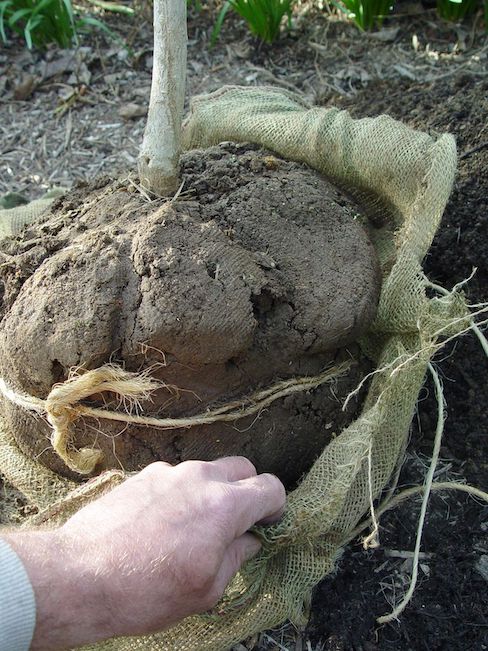
For your enjoyment, be sure the sound is turned up so you get the full effect.
https://youtu.be/D9AUnYTol68
Great article about burlap, Sylvia….so informative and enlightening!
Agree. V. good article. I have always removed it, but it’s nice to know I was doing something correctly!
With all the time and labour that goes into the production of burlap, it is astonishing that it should cost so little.
I grew up in the Deep South and my dad’s family of farmers always referred to burlap as ‘Croaker sacks’ so interesting to see that the Jamaicans call it ‘Crocus’.
Saw your youtube lectures and landed here. Subscribed!
I’ve been reading about sheet mulching with untreated burlap and wood chips instead of cardboard. I’ve got dense stands of invasive garlic mustard (very allopathic, even prevents tree seeds from sprouting). I don’t want to spray it for multiple years, and the seeds remain viable for decades. The most effective solution seems to be 6-8″ deep mulch laid on top of a permeable barrier, allowing it to rot for a couple years, then planting on top of that. What do you think about that idea? Do you have any other recommendations? Thanks!
Allelopathy isn’t really a thing in the landscape. You’ve got competition for sure. The best thing to do is mow the weeds to the ground and put a foot of wood chips down – and keep it at that depth. Don’t use a barrier. Don’t plant into the chips. It won’t take years to kill the weeds and the seeds are viable for 10 years, tops. If you kill the weeds and then plant your desired plants – and keep it all mulched – then you will be able to outcompete most if not all of the garlic mustard.
Thanks! I’ll give that a try. In terms of allelopathy, the Ontario Invasive Plants Council put out this well referenced document claiming that garlic mustard is highly allelopathic… is this inaccurate? It sure seems that once it’s established, previously present plants die back and nothing else can grow there, even typically enthusiastic plants like Canadian violet. https://www.ontarioinvasiveplants.ca/wp-content/uploads/2016/07/OIPC_BMP_GarlicMustard.pdf
The problem with this and other similar documents is that allelopathy is only observed under controlled laboratory or greenhosue conditions. It doesn’t happen in nature. You can read this peer-reviewed publication on the topic, which discusses black walnut specifically but talks about the logical error of conflating correlation to causation without experimental evidence. https://www.researchgate.net/publication/333516407_DO_BLACK_WALNUT_TREES_HAVE_ALLELOPATHIC_EFFECTS_ON_OTHER_PLANTS_HOME_GARDEN_SERIES
Thanks for the reminder and the excellent resource.